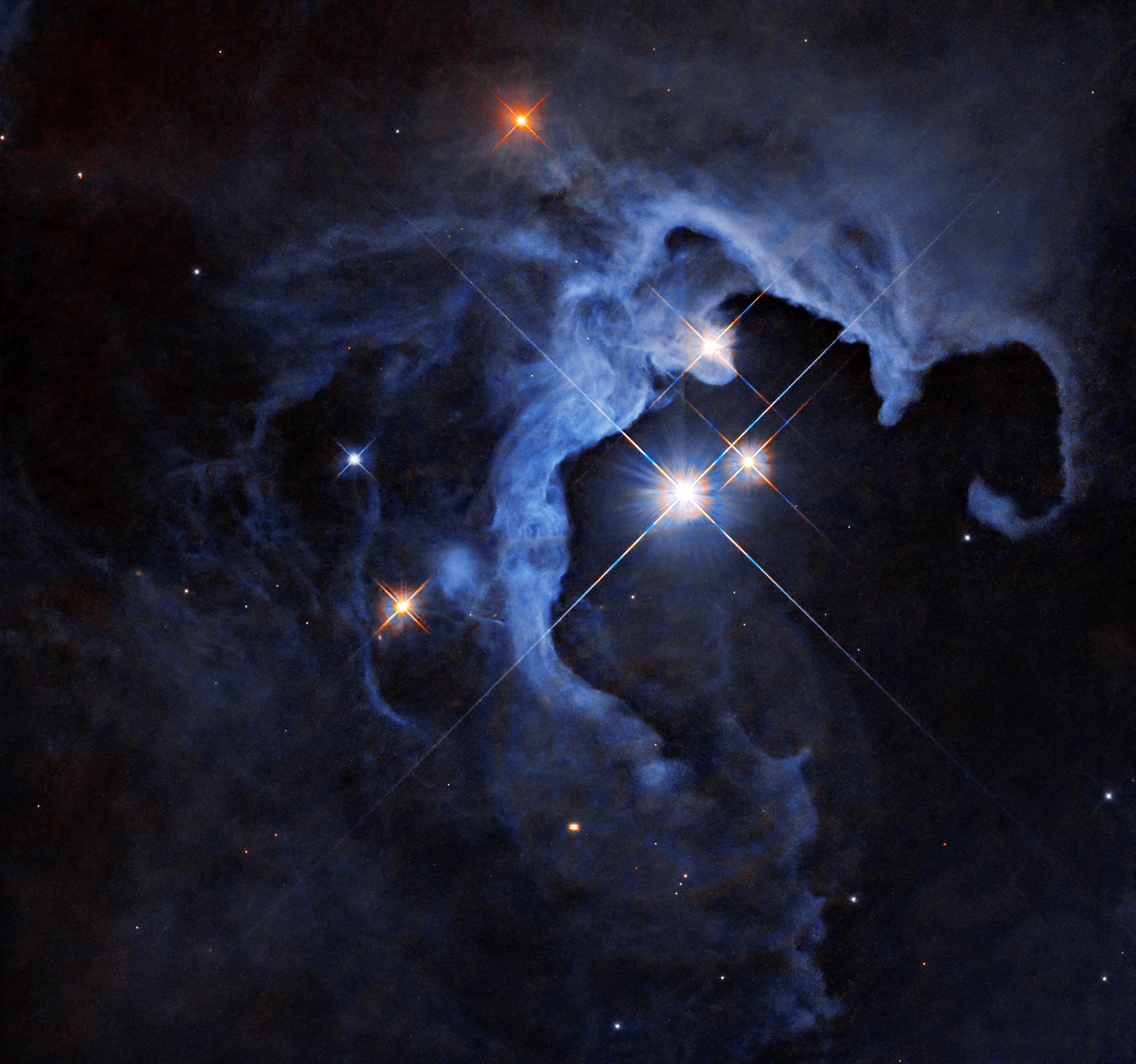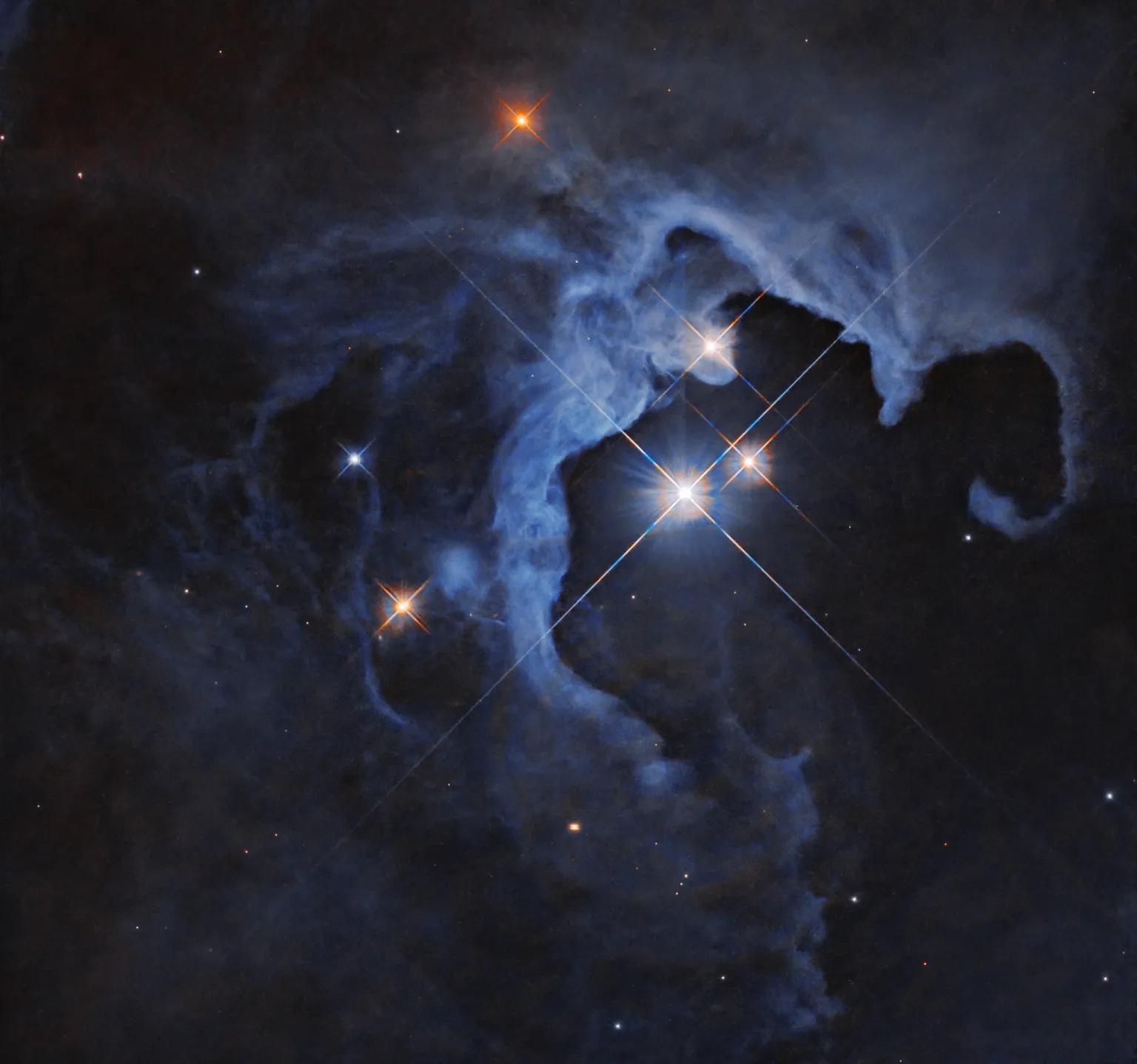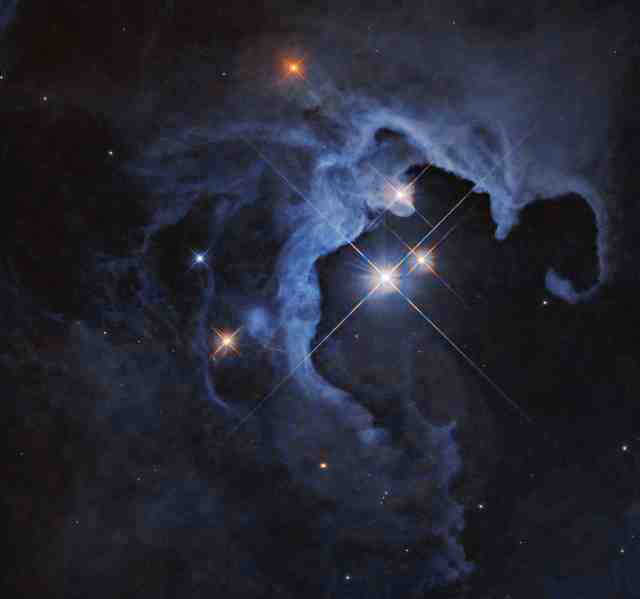
In the vast expanse of space, approximately 550 light-years away in the constellation Taurus, lies an intriguing triple-star system named HP Tau. This captivating celestial body has recently been the subject of intense interest among astronomers due to its unique characteristics and evolving nature.
HP Tau is composed of three stars: HP Tau, HP Tau G2, and HP Tau G3. The central star, HP Tau, is a young variable star that hasn't yet initiated nuclear fusion but is on the cusp of evolving into a hydrogen-fueled star similar to our Sun. This stage in a star's life cycle is known as the pre-main sequence phase.
HP Tau tends to be younger than 10 million years old, making it an exciting find for astronomers studying the early stages of stellar evolution. The other two stars in the system, HP Tau G2 and HP Tau G3, are still being researched and their properties are not yet fully understood.
The triple-star system is embedded within a reflection nebula, which does not emit visible light on its own but reflects the light from nearby stars. This creates a stunning visual effect that resembles a cosmic geode or hollowed-out cavity in the nebula. The reflection nebula provides an intriguing backdrop to the young stars and adds to their allure.
HP Tau's brightness is subject to both periodic and random fluctuations, which can be attributed to various factors. The random variations may be caused by instabilities in the accretion disk of dust and gas surrounding the star, material from that disk falling onto the star and being consumed, or flares on the star's surface. The periodic changes could be due to giant sunspots rotating in and out of view.
The triple-star system is a fascinating discovery for astronomers as it offers valuable insights into the early stages of stellar evolution. Hubble Space Telescope has been instrumental in studying HP Tau and its surrounding nebula, providing detailed images that reveal the complex interplay between the stars and their environment.
As part of an investigation into protoplanetary disks, Hubble studied HP Tau to better understand the process by which planets form around young stars. These disks are composed of gas and dust that coalesce over millions of years to create planetary systems.
The study of HP Tau and its triple-star system underscores the importance of continued exploration and research into the mysteries of space. With each new discovery, we gain a deeper understanding of the universe around us.



